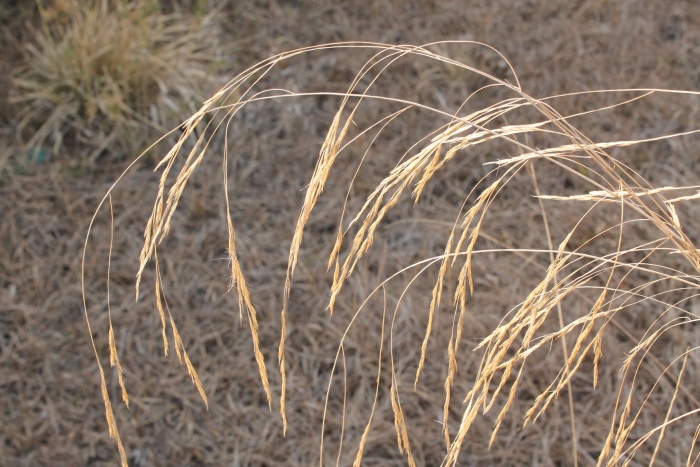Poverty Threeawn
(Aristida divaricata)
Poverty Threeawn (Aristida divaricata)
/
/

Viacheslav Shalisko
CC BY 4.0
Image By:
Viacheslav Shalisko
Recorded By:
Copyright:
CC BY 4.0
Copyright Notice:
Photo by: Viacheslav Shalisko | License Type: CC BY 4.0 | License URL: http://creativecommons.org/licenses/by/4.0/ | Rights Holder: Viacheslav Shalisko | Publisher: iNaturalist | Date Created: 2018-04-13T17:48:34-07:00 |




















Estimated Native Range
Summary
Aristida divaricata, commonly known as Poverty Threeawn, is a perennial grass that is native to a variety of habitats including prairies, plains, and open woodlands from the central United States to Guatemala. It typically forms dense clumps of unbranched, wiry stems that can reach up to 28 inches in height. The leaves are mostly basal, narrow, and roll inward along the edges. The inflorescences are sparse and consist of a wide, flat array of spikelets that disarticulate easily, each bearing a single grain with a twisted tip and three distinctive awns up to 1 inch long, which aid in seed dispersal by catching onto passing animals or being blown by the wind.
Poverty Threeawn is valued for its drought tolerance and ability to thrive in poor soils, making it a suitable choice for xeriscaping and restoration projects in arid regions. It is also used for erosion control due to its clumping growth habit. In cultivation, it requires minimal care, thriving in full sun and well-drained soils. However, it is not typically used in ornamental landscaping due to its less showy appearance. Gardeners should be aware that it can self-seed and spread in favorable conditions, potentially becoming weedy.CC BY-SA 4.0
Poverty Threeawn is valued for its drought tolerance and ability to thrive in poor soils, making it a suitable choice for xeriscaping and restoration projects in arid regions. It is also used for erosion control due to its clumping growth habit. In cultivation, it requires minimal care, thriving in full sun and well-drained soils. However, it is not typically used in ornamental landscaping due to its less showy appearance. Gardeners should be aware that it can self-seed and spread in favorable conditions, potentially becoming weedy.CC BY-SA 4.0
Plant Description
- Plant Type: Grass
- Height: 1-2 feet
- Width: 0.5-1 feet
- Growth Rate: Slow
- Flower Color: N/A
- Flowering Season: Spring, Summer, Fall
- Leaf Retention: Deciduous
Growth Requirements
- Sun: Full Sun, Part Shade
- Water: Low
- Drainage: Fast, Medium
Common Uses
Erosion Control, Low Maintenance
Natural Habitat
Native to prairies, plains, and open woodlands
Other Names
Common Names: Havard threeawn, Poverty Threeawn, Havard’s threeawn
Scientific Names: , Aristida divaricata, Andropogon divaricatus, Andropogon divaricatus, Aristida divaricata, Aristida humboldtiana, Aristida jacquiniana, Aristida jacquiniana var. durandii, Aristida lemmonii, Aristida palmeri
GBIF Accepted Name: